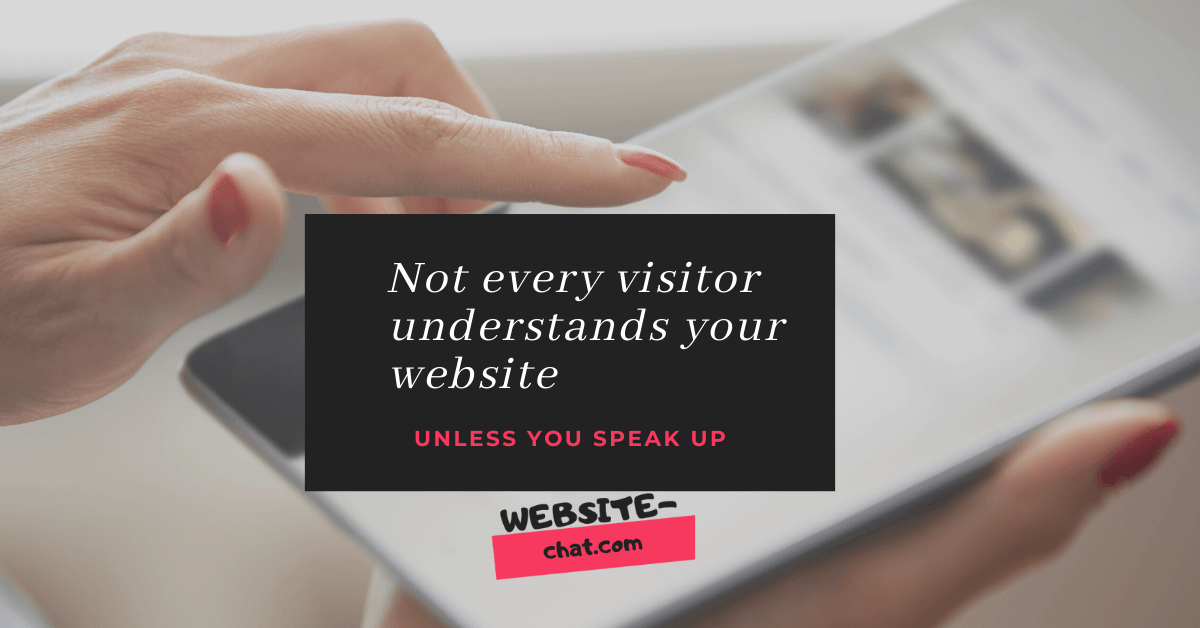The new tactic: For marketers focused on helping their firms rebound
Naomi Campbell • June 30, 2020
The thing that makes customers listen more than anything else. And the thing that we can deploy starting tomorrow in our first conversations…
Empathy...
According to the latest McKinsey B2B Decision-Maker Pulse, buyers are now twice as likely to opt for on-line purchasing - and many won’t change their on-line approach once the pandemic is finally over.
So with buyers transitioned to virtual purchase journeys where 'self service' ' is the preferred model, how and when do sales teams engage 1-1 to build relationships?
We're seeing companies tool-up to make 'instant chat' more available on customer screens; on corporate web sites; at webinar events; on social site forums... Places where buyers can engage on-demand.
This blog highlights a skill to make B2B chats stand-out in today’s world

1) Have your sales teams been trained in chat etiquette?
A large majority of business (96%) have already shifted their go-to-market strategy, with remote selling “now the norm and perceived to be effective”.
Suddenly, there is no real distinction between inside sales and those out in the field (as far as customers are concerned).
Organisations have recognised that most sales conversations begin on screens.
And this shift in behaviour is revealing a skills and experience gap for many field sales reps when suddenly they're asked to stand-by on 'chat' for a webinar or web-event or response desk.
TEXT-BASED EXCHANGES, WHERE INSTANT ANSWERS ARE EXPECTED AND OFTEN TRANSCRIBED FOR REFERENCE require a well-trained head. (Saying the wrong thing carries a cost). Chat etiquette needs to be documented and rules shared across
sales teams.
2) So what's the takeaway today - what makes customers want to carry-on chatting with your team
The secret lies in the TONE of your B2B chat:
If we believe that live, on-line chats are effective vehicles to help move client engagement forwards, we must remember that it’s the first touch-point that determines the relationship. So the tone that we deploy starting from tomorrow, in our first live engagements on-line… is one focused on listening and responding WITH EMPATHY.
Why empathy?
It reminds us of the importance of understanding one another. Interpreting what someone might mean without it being spelt-out in text.
Empathy is the ability to recognise, understand, and exchange thoughts. To offer instant assistance before a trivial concern becomes a big objection and headache. To share experiences whether personal or corporate.
If a customer opens up dialogue on-line, developing empathy is the first thing needed to establish relationship and show respect and compassion. It gives space to hear the other person’s point FIRST, checking and responding
with genuine openness. It puts a stop to; formulaic qualification steps, pre-written chatbot snippets and templated 'copy & paste' paragraphs.
Introducing empathy shapes a more free-flowing interaction. It means your company’s sales process can no longer be forced onto a buyer. It makes the buyer feel in control. Sales teams need to skill-up as agile chat professionals,
well-prepared to write accurately – on-message - on-the-fly - on record.
(Get the right tone and they'll like you!)
3) Why is it so important to train teams in on-line engagement?
More often than not, sales personnel tend to dive straight-in to an on-line chat without trying to understand a customer’s motive and perspective. We’re so caught up in the urgent need to pack-in the benefits as quickly as possible that we forget
to use language and phrases that coax more information out, so that we can answer questions better and without deliberation.
It’s not second nature to wait for a customer to stop typing (in fact most sales reps are writing answers in a chat exchange before the customer finishes their last sentence). The perfect tone, pace and timing of an on-line exchange needs practice and guidance. It must be pro-active but not pushy, prepared but not pre-scripted.
Empathy in chats is about discovering key drivers, not waffling for the sake of holding-on to keep a dialogue live. Conversational competence is not about product specs and features, but stories and
experiences.
If your team considers ‘what they say’
to be more important than ‘how and why they say it’
– it’s time for some training.
A recent blog written by Mitch Little supports our emphasis on the power of on-line empathy. He views empathy as the cornerstone for ALL of our selling thinking. In his words ‘Empathy is it. It is everything. It’s how we make a difference by showing we:
Care greatly
Understand deeply
Serve endlessly
with Purpose
And we do all of that with an anchor of EMPATHY THAT’S GENUINE.
Go have some virtual conversations with your team about how they present themselves on-line
and the impact that tone of voice has when a client discovers that you actually care about them and their challenges.
SERVE FROM EMPATHY!
Put a managed service of; live chat, email, text & call-me on your website
If your chat widget pops on screen, you need to be ready to answer because chat means ‘chat’
– it’s not a message taker.
Call Us
Email Us
Instant messaging is all chat agencies do… Their role is to assist in the set-up, running and optimisation of live chat/engagement services. To them, they’re bound by SLA to be ready as soon as someone has a question or problem on-line.
Emails can take a few hours to answer, but B2B online engagement (when done well) is an ongoing, trackable, live conversation with file-sharing and linking capabilities that drive the engagement & endorsement process forward in a measurable way.
Take the ‘ouch’ out of an ‘on-demand’ service. Get more advice
on optimised chat for corporate brands.
Book a call-back
Share this blog

More often than not, calls and posts coming-in to your business originate on a mobile phone. But what if that user wants to reach you instantly without making a call? This article shares 5 tips to maximise instant engagement opportunities through: text, email, live chat, call-me buttons and social sites.

If we're cautioned about putting live chat on every page of our websites - where should it go? This article highlights four types of web page where chat services work well. Whether you're setting-up a new online attendant service or tweaking an existing one, it's worth mapping your objectives with the page recommendations here to see if you're aligned.

This year '000s of companies have deployed live website chat on their corporate sites. Should you add advisers and chat bots to yours? This blog discusses the business benefits of B2B live chat engagement. Read 5 best practice steps to start, run and optimise a live chat service on your website. Consider the option of outsourcing to a chat services agency who knows your industry.






